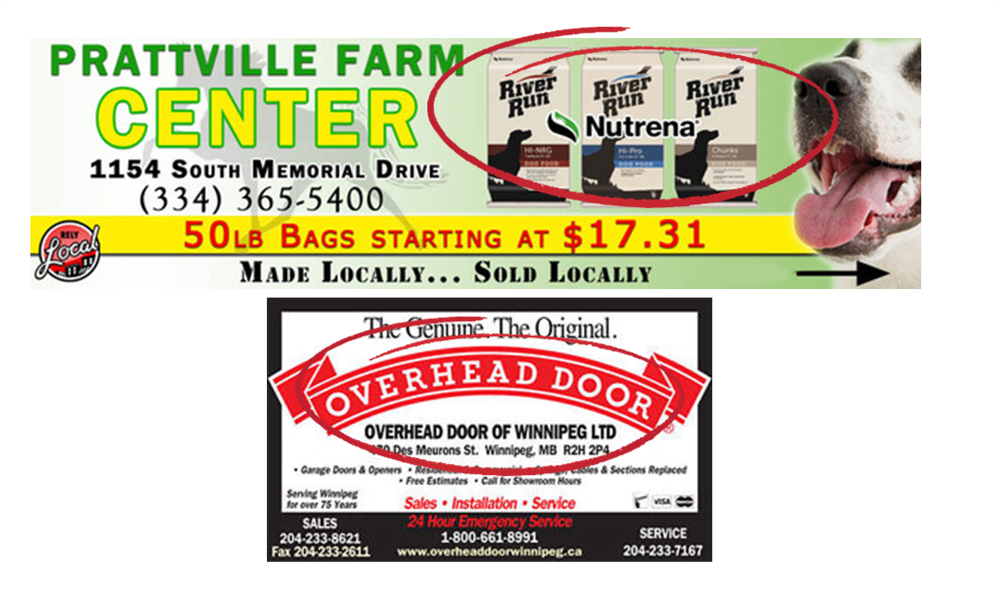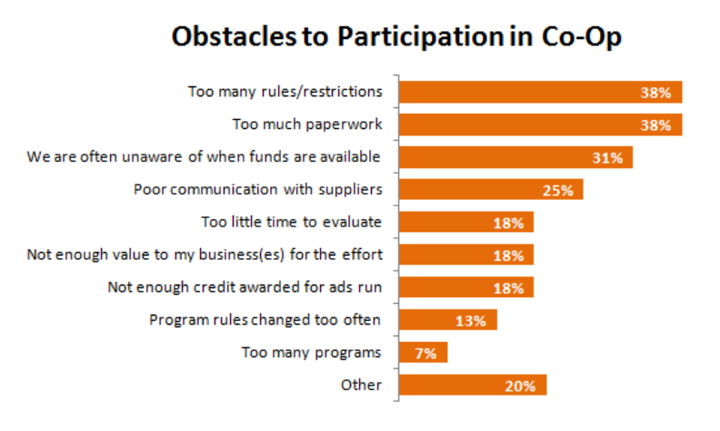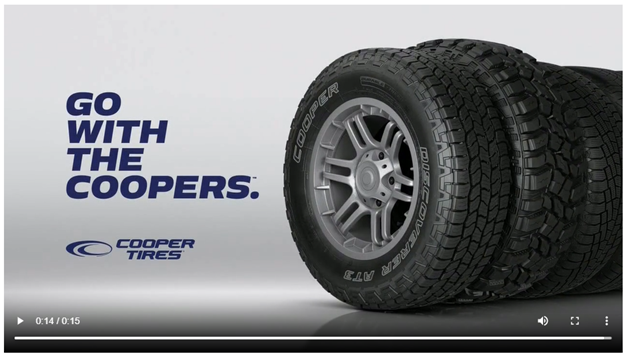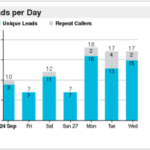How does Co-Op advertising work with Digital?
Can Co-Op be used for Digital Advertising?
Yes. Yes. Yes!
If someone told you that you were ignoring a $42 billion opportunity, wouldn’t you want to find out how to get access to that opportunity?
According to Marketing Land total co-op available each year stands at $70 billion. And, as of right now, only 20% of that is used for digital advertising. But, with e-commerce players spending 80% of their budget on digital channels, and applying that model to the wider market, this unlocks long-term opportunity. Closing that gap from 20% to 80% is where that $42 billion comes up for grabs.
Co-Op… let’s define it first. Simply put, Co-Op advertising is when a brand or manufacturer pays for a portion (in some cases all) of an advertising campaign from a local business. We’ve seen it for a long time in television and radio advertising, as well as most traditional mediums, including print. The brand or manufacturer is paying to be featured in a small portion of the ad, or in sometimes have exclusivity in the ad. There are a lot of terms associated with co-op that you may want to get familiar with.
Why use Co-op?
There are many reasons to use co-op, but here are 4 reasons we’ve found that make the most practical sense:
- Retail Budgets – One of the biggest advantages is it grows your marketing budget. If your business has a monthly budget of $2,500 to spend in digital, and a brand/manufacturer will cover 50% of your campaign, you now have a $5,000 budget to spend, giving you more exposure in your marketplace.
- In-Kind Promotional Items – This is more of a perk, if you will. Sometimes brands will supply their retailers with promotional items for giveaway. This is great, especially if you can include it in your creative.
- Creative Guidance – Speaking of creative, lots of brands/manufacturers have specific guidelines that need to be followed when promoting them. This isn’t a bad thing in most cases. They’ve gone through the trial and error as to what works and can support you with the creative, making your life easier. In fact, often times, they have digital creative already set to go. You just plug and play your info and you’re off with your campaign!
- Reputation – Partnerships. Aligning yourself with national brands allow you to tap into the raving fans that exist for those brands. It helps boost your credibility because you carry XYZ products/brands.
Here’s what it boils down to… if you have the ability to access it, why wouldn’t you take advantage of the money that you earned by purchasing from these brands/manufacturers?
How to use Co-Op
Whether you’re advertising for the holidays or promoting your spring products, it’s best to understand the process behind Co-Op.
- You have to ask! You should check with all of your vendors if they offer co-op. It’s pretty likely they aren’t going to chase you down to give you money. If they do offer it, find out the details behind it. What advertising mediums are included, how much do they reimburse you for, etc. Some plans are more complex, so make sure you get all of the details.
- Make sure you understand the rules. When you can talk to a live person, do it. Or speak to someone that can find out for you. You want to make sure that you follow all the rules terms provided so that you get that reimbursement from the manufacturer.
- Get approval. No matter the medium, the advertising can’t run unless they approve it. In most cases, especially with digital, that’s just a matter of emailing them the creative that’s going to run, and then they’ll respond. Make sure to keep all communication during this process.
- Track the campaign and submit for reimbursement. At the end of the campaign, the brand/manufacturer will likely want to see some sort of reporting. At Vici, we provide that to our partners on behalf of their clients.
Tip: If, as a business owner, you don’t feel comfortable with the process or any part of the co-op program, there are many media companies and ad agencies that can walk you through, and help you with this process.
Challenges
Free money for your advertising campaign should be easy to get, right?! Everyone should be doing this right? With every opportunity also comes some challenges. Why everyone isn’t cashing in on this opportunity to get their advertising paid for? The Process. Sometimes there are certain restrictions in place or the amount of paperwork needed is too much for some business owners. There can be several reasons that keep businesses for cashing in on this dough.
Here are some of the top reasons business owners don’t take advantage of co-op opportunities:
As you can see, all of these obstacles have one thing in common. Time. This is not a quick process, though it can be very rewarding. This is where a local media rep or ad agency can take this off your plate, help you through the process to receive those dollars that are awaiting you.
Best Practices
Remember, you don’t have to go from beginner to expert in Co-Op. In fact, it’s likely that will be difficult to do. However, if you’re one of the business owners that decides to cash in on this opportunity, here are a couple best practices to utilize in your process:
- Set a goal – this can be as easy as making the decision to move forward with Co-Op. It can also be saying you want to grow your Co-op money for advertising.
- Identify a strategy and a process to execute. (we’ll talk more about this later)
- Find brand partners – this can be done via the relationships you have with your vendors, or through a media group or ad agency. These types of organizations can have access to the co-op opportunities that exist for most of the brands out there.
- Test and learn – there will be some brand guidelines that may not work for what you are trying to accomplish. It’s ok to talk with multiple brands at a time, and have several co-op plans in place to see what works best for you.
Strategies that utilize Co-Op
When it comes to digital co-op, there are a lot of brands and manufacturers that are just entering the space. This is a good thing as they see value in putting their brands online. However, sometimes, you may come up against someone new to online co-op, so their options may be limited.
Display Ads are the most common types of ads that receive Co-Op reimbursement. The reason for this is because they can be specific sizes, and it’s easy for a brand or manufacturer to create a template for all of their dealers/retailers.
Display Ads are the typical banner ads that you see online. These ads are great for branding purposes and you can usually have a lot of freedom with your designs. In addition, almost every industry can take advantage of these ads. Brands and Manufacturers often have guidelines for these and may even have a library of ads you can choose from.
Mobile Conquesting™ is another strategy that is commonly used for Co-Op, where you can specifically target to mobile devices. With the popularity of smart phones and tablets, it’s no wonder brands are wanting to be in this space. From being able to target competitors with geo-fencing to specifically targeting the physical addresses of your current/past clients through address targeting the availability of opportunities are endless, giving brands the ability to literally be in the hands of potential customers.
The last strategy to look into is almost anything video. From OTT, ads shown on streaming servings, to regular video pre-roll, think of digital video ads as TV commercials that can be placed elsewhere. Imagine someone ramping up their Roku device and going to stream their favorite movie. During that movie, your ad shows up in a normal commercial break. Side note: if you’re not using video in your advertising mix, you are definitely missing out.
When it comes to digital advertising and Co-Op, there are a few strategies that don’t typically get approved. Native Ads and Social Media Ads. Native Ads, because their shape, size, and color could change based on where the ad gets served, don’t typically get approval for co-op because there’s no guarantee that the ad displayed would exactly meet the brand’s specifications. With Social Media, the ability to comment on the ads is what we’ve seen as the reason they don’t get approved. Brands don’t want the ability for people to comment on and ad, good or bad, without having the ability to control the responses. Also, Pay-per-Click ads are typically not an approved type of digital for Co-Op.
To recap, please take away these few key points when it comes to Co-Op:
- Get started. Talk with your vendors about Co-Op. Ask the questions.
- Consult a Media Company or an Ad Agency for support with the Co-Op process and opportunities to help you execute.
- Grow your business. Utilizing Co-Op is an opportunity to take advantage of lots of money, that you earned, to increase your marketing budget and grow your market share in your industry.










